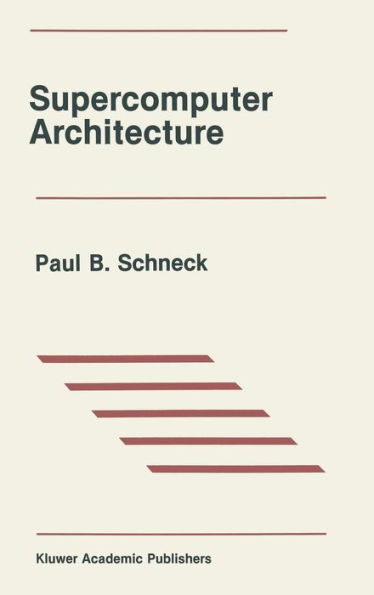Supercomputer Architecture
Supercomputers are the largest and fastest computers available at any point in time. The term was used for the first time in the New York World, March 1920, to describe "new statistical machines with the mental power of 100 skilled mathematicians in solving even highly complex algebraic problems. " Invented by Mendenhall and Warren, these machines were used at Columbia University'S Statistical Bureau. Recently, supercomputers have been used primarily to solve large-scale problems in science and engineering. Solutions of systems of partial differential equations, such as those found in nuclear physics, meteorology, and computational fluid dynamics, account for the majority of supercomputer use today. The early computers, such as EDVAC, SSEC, 701, and UNIVAC, demonstrated the feasibility of building fast electronic computing machines which could become commercial products. The next generation of computers focused on attaining the highest possible computational speeds. This book discusses the architectural approaches used to yield significantly higher computing speeds while preserving the conventional, von Neumann, machine organization (Chapters 2-4). Subsequent improvements depended on developing a new generation of computers employing a new model of computation: single-instruction multipledata (SIMD) processors (Chapters 5-7). Later machines refmed SIMD architecture and technology (Chapters 8-9). SUPERCOMPUTER ARCHITECI'URE CHAPTER! INTRODUCTION THREE ERAS OF SUPERCOMPUTERS Supercomputers — the largest and fastest computers available at any point in time — have been the products of complex interplay among technological, architectural, and algorithmic developments.
1117772646
Supercomputer Architecture
Supercomputers are the largest and fastest computers available at any point in time. The term was used for the first time in the New York World, March 1920, to describe "new statistical machines with the mental power of 100 skilled mathematicians in solving even highly complex algebraic problems. " Invented by Mendenhall and Warren, these machines were used at Columbia University'S Statistical Bureau. Recently, supercomputers have been used primarily to solve large-scale problems in science and engineering. Solutions of systems of partial differential equations, such as those found in nuclear physics, meteorology, and computational fluid dynamics, account for the majority of supercomputer use today. The early computers, such as EDVAC, SSEC, 701, and UNIVAC, demonstrated the feasibility of building fast electronic computing machines which could become commercial products. The next generation of computers focused on attaining the highest possible computational speeds. This book discusses the architectural approaches used to yield significantly higher computing speeds while preserving the conventional, von Neumann, machine organization (Chapters 2-4). Subsequent improvements depended on developing a new generation of computers employing a new model of computation: single-instruction multipledata (SIMD) processors (Chapters 5-7). Later machines refmed SIMD architecture and technology (Chapters 8-9). SUPERCOMPUTER ARCHITECI'URE CHAPTER! INTRODUCTION THREE ERAS OF SUPERCOMPUTERS Supercomputers — the largest and fastest computers available at any point in time — have been the products of complex interplay among technological, architectural, and algorithmic developments.
54.99
In Stock
5
1

Supercomputer Architecture
199
Supercomputer Architecture
199
54.99
In Stock

Product Details
| ISBN-13: | 9780898382389 |
|---|---|
| Publisher: | Springer US |
| Publication date: | 09/30/1987 |
| Series: | The Springer International Series in Engineering and Computer Science , #31 |
| Edition description: | 1987 |
| Pages: | 199 |
| Product dimensions: | 6.10(w) x 9.25(h) x (d) |
From the B&N Reads Blog
